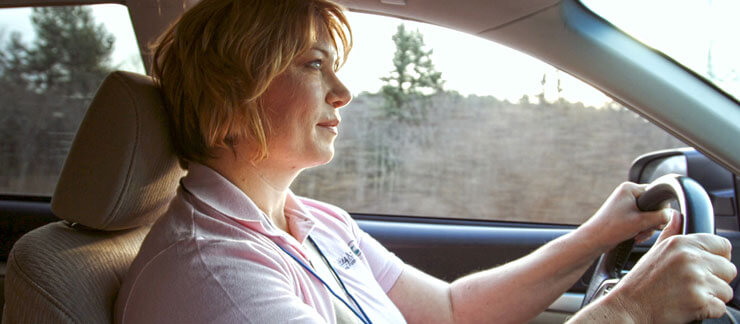
A Generation in Denial: A Call for Faster Action
No matter how digitally connected our world is today, 8 million of today’s older adults are socially disconnected. Although, that AARP estimate on isolation is believed to be a conservative one, per this recent Public Policy & Aging
As more families enter the sandwich generation category — caught between caring for older adults, children and sometimes grandchildren as well — the problem is compounded.
Distance is not always the problem. For adult daughter Linda, who lived two doors down from her parents and cared for both through Parkinson’s, dementia and strokes, it was the overwhelming responsibility of being on call 24-7. Her mother was not able to drive, so Linda took her to doctor’s appointments, managed her medications, did her grocery shopping and laundry and even helped with meal prep after her first stroke limited her ability to get up and down the stairs (her kitchen was upstairs, her bedroom downstairs).
She also needed help getting dressed in the morning and getting into bed at night, and after a traumatic health emergency with her mother, Linda lived with the constant fear of kissing her goodnight for the last time or finding her mother unresponsive or distressed when she'd come to help her in the morning.
Overnight care wasn’t the only concern. Though she was fairly independent during the day and lived in a multigenerational household, Linda’s mother was frequently alone in between the times her daughter came to help — as her grandchildren and great-grandchildren were often tied up with school, work
Some older adults choose to isolate themselves despite the risks, despite encouragement from family to access support even on a small scale, such as getting a Medic Alert button or bringing in home care to help with laundry. This is the case for Alicia’s grandmother, who is adamant about living alone even though her home is full of fall risks (i.e., outside steps into the house, steps to the laundry room — which is located in the basement — and steps to the 2nd-floor bathroom).
She also lives over an hour away from family, making it extremely difficult to respond to emergency situations. Recently, she fell in her bathtub, and although she wasn’t hurt, she was unable to get out of the tub for several hours. And, as she was away from her phone at the time, she was unable to call anyone for help.
The Reality of Isolation
The reality is, many family members are willing to help — and do so, faithfully — but the needs of isolated seniors, like Alicia’s grandmother and Linda’s mother, are not easily or adequately met by just one person, whether that person lives over an hour away or two doors down.
Part of the challenge is that meeting the social and emotional needs of an older loved one can be incredibly difficult in the midst of balancing other family and social commitments, especially when healthcare-related support like medication management or getting to a doctor’s appointment must take precedence.
Grief and depression further intensify the daily need for companionship among these isolated seniors: many have lost spouses, friends, siblings and other close relatives. Many are also feeling like a burden and are unable to manage life or enjoy hobbies as they did before.
Pets do provide companionship, but their care often presents an added responsibility for an already taxed family caregiver, or an increased risk for a senior prone to falls. Pets may also be the reason an older adult refuses to leave home — even for a necessary medical appointment. This is the main reason Alicia’s grandmother does not want to leave her home and move in with family, or to a
This reinforces the need for more consistent, daily supervision, companionship and support to alleviate the pressures and risks of isolation. Unfortunately, many family members caring for a loved one wait too long to implement that daily presence through home care, or they’re stymied by the refusal of their senior to let so-called strangers into the home.
It Doesn’t Have to Be This Way
A geriatric psychologist who worked primarily with frail, isolated seniors in New York City once said, “If I could write a prescription for companionship, I would. And I’d probably have much fewer patients.”
Companionship is powerful. But the diminishing loss of ability and independence is not easily overcome. And seniors can be stubborn at accepting help or support, no matter how much we need it.
Even if our older loved ones could benefit from home care, it’s a conversation and decision families should ease into, which means starting the process sooner. Check out this useful read on building family consensus for home care.
But unfortunately, because sandwich generation families are pulled in so many directions — and because isolated seniors understandably feel disconnected, feel like a burden or are grieving — it's often a crisis that triggers a care transition, usually to long-term care.
Still, there’s help for the sandwich generation. Home care, even for just a few hours a week, can make a life-saving, life-changing, independence-prolonging difference for older adults. It also reduces the burdens of time, energy and the emotional toll on primary caregivers, allowing them to provide support for a much longer duration. And it fights the rising tide of isolation that is doing far too much damage to current seniors and their families.
Consider your next conversation with your loved one about home care. Do your due diligence first about how it works and how it can help (it's not just for people who need medical care at home), and present it in the favorable light of maintaining independence, instead of taking it away. Take time to think about it and come up with the best arrangement together, instead of waiting until it’s too late to make a difference.
For more on why it’s best to be proactive for your aging loved one, click here.


